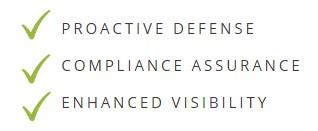As businesses increasingly migrate their infrastructures to cloud platforms like AWS, Azure, and GCP, securing these environments becomes both critical and challenging. Cloud Security Posture Management (CSPM) is a powerful strategy designed to tackle these challenges by identifying, managing, and mitigating security risks across multi-cloud environments.
What is Cloud Security Posture Management (CSPM)?
CSPM combines automated tools and manual processes to continuously monitor cloud environments, ensuring they adhere to security best practices. Its primary objective is to detect and remediate misconfigurations or compliance gaps that could expose organizations to security breaches.

Why is CSPM Vital?
- Proactive Defense
CSPM identifies vulnerabilities and misconfigurations before they escalate into major security incidents. - Compliance Assurance
By aligning with frameworks like CIS Benchmarks, GDPR, and other regulations, CSPM helps organizations maintain compliance, safeguarding trust and reputation. - Enhanced Visibility
In complex multi-cloud setups, CSPM provides a unified view of security risks, making it easier to maintain consistent protection.

Tools and Techniques for CSPM
Automated Tools:
1) Prowler

Designed for AWS, this tool performs compliance checks that align with security frameworks.
2) ScoutSuite

A multi-cloud tool supporting AWS, Azure, and GCP, helping maintain security consistency.
3) PACU

An AWS exploitation framework that simulates adversarial actions for an added layer of security checks.
Manual Checks and References:
- Eliminating False Positives: After automated scans, filter out any findings that don’t pose actual security threats, such as cost or performance alerts.
- Reliable Resources: Trusted sources, like Trend Micro or cloud documentation, aid in verifying and resolving real risks.

Step-by-Step CSPM Process
- Define Scope and Objectives: Identify key assets and set security benchmarks, such as the CIS framework.
- Run Automated Scans: Use tools like Prowler, ScoutSuite, and PACU to establish a baseline.
- Filter Non-Security Issues: Exclude findings related to cost or performance to zero in on critical risks.
- Perform Manual Checks: Analyze high-risk findings in greater depth to uncover overlooked vulnerabilities.
- Reference Trusted Resources: Apply remediation strategies based on verified reports.
- Generate Reports: Provide detailed documentation that outlines risks, impacted assets, evidence, and recommended fixes.
Challenges in CSPM and How to Overcome Them
| Challenges | How to Overcome |
| Dynamic Environments | Regular scans help manage new risks due to cloud changes |
| Multi-Cloud Complexity | Tools like ScoutSuite allow uniform assessments across providers |
| Manual Check Limitations | Focusing on high-risk areas saves resources, while automation handles routine tasks |
Best Practices for Effective CSPM
✅Automate for Efficiency: Tools like Prowler streamline security across cloud platforms.
✅Focus on Security: Filtering out non-security items keeps the team focused.
✅Use Trusted Resources: Ensures remediations are timely and relevant.
✅Clear Communication: Summarize findings for stakeholders in accessible reports.

Conclusion
In today’s cloud-first world, Cloud Security Posture Management (CSPM) isn’t optional—it’s essential. With a balanced approach combining automation, manual checks, and trusted resources, organizations can proactively safeguard their cloud environments. Want to stay updated on cutting-edge cybersecurity trends and strategies?
Visit our Youtube Channel for expert insights and in-depth discussions.